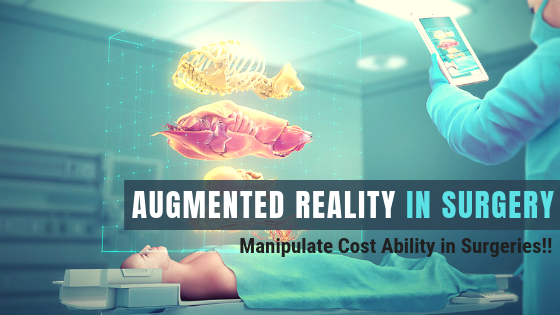
Medical advances have been propagating on every hemisphere. The biggest in recent times have been mammography, ultrasonography, computerized tomography, magnetic resonance imaging to name a few. Among all of these, there are technological developments adding up the process, with cameras, and some real-time data streaming devices. Annual World Health Care Medical conferences in Amsterdam 2019 focus on technological aspects of augmented reality.
In the recent domain, in emergencies, there are CT and ultrasound guiding the processes. With the advent of augmented reality, it can be performed in real time at the sound health of patients.
The Current Status of Technology in Healthcare.
Recently, imaging has evolved drastically. It is not the same as it was back in 1950. The visual data has always been on the 2D screen, but with augmented reality, there can be a major change.
The visual data enables the doctors to look away from the patient and take their hands away while operating. Further, the images are not always displayed on the vision of the onlooker, rather from the imaging device. For this doctors have to be skillful and use imagination in understanding the mentality of the project in the images involving the patient when doing surgeries.
Ordinarily, different versions of data which is visual are displayed on a separate scale, as a result of which doctors can have direct attention to fuse multiple image types. These include sort of angiography and CT scanning which can be made into a coherent representation of the patient’s status.
Augmented Reality, the future!
The current research says that the augmented reality can superimpose the digital information of the physical world. Maryland Blended Reality Center’s -Augmentation are applying the prototype in medicine domain.
Further, a surgeon who is using the AR headset like that of Microsoft would be able to see digital images and varied data on a wider field of view.
In such instances, the headset of the device can have a display of hovering echocardiogram which can further notify signs and data of patient’s characteristics. This can also show up the patient’s aneurysm on the surgical point of view. As a result, the surgeon doesn’t have to look away from the patient multiple times in order to gather or interpret pieces of information.
What are the positive effects?
With the added benefit of cost reduction and a safe process, the need for screens is also reduced. The processes like ultrasound, endoscopy, and bronchoscopy require a profound vision of hospitals to buy the systems and perform them at a cost. This process isn’t a different mode of imaging special displays but can greatly ease the current incompatible costly assets.
Hemodynamic monitors and ventilators have been largely used and the data is not merged further. With the advent of Augmented Reality, there would be a reduced cost for a monitor, with an aspect of each patients’ data. This can altogether put a lot of psychological data from multiple sources merging to real time.
The Annual World Health Care, Amsterdam, Netherlands.
International Conference on Global Healthcare will give access to the technology and the growth of the Healthcare Industry. It also plans to consider both the developed and developing world perspectives of outcomes in the field of healthcare. Physicians and associates along with psychology, physiotherapy, nursing, and different health professionals will share their views on the topics of technology in the healthcare domain.